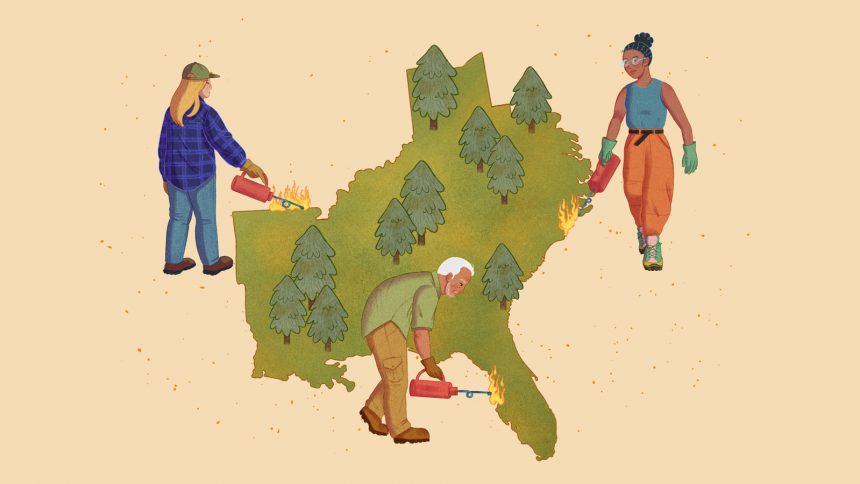Courtney Steed, a Lumbee tribe member who leads the Cultural Burn Association, has a unique approach to setting fires in the Sandhills of central North Carolina – she often does it barefoot. This enables her to better understand moisture levels in the underbrush, which is essential for controlled burns. For Steed, burning barefoot is not only a practical choice but also serves as a way to connect with the Earth and her ancestors.
While wildfires are typically associated with the Western U.S., the East has also been impacted by fire historically. Indigenous peoples, like the Lumbee, used controlled burns for thousands of years to manage ecosystems and clear vegetation. However, colonization and government actions nearly eliminated this practice. In recent years, there has been a resurgence of controlled burns and other Indigenous land management techniques in the West, and now this is expanding to the Southeast.
Groups like the Cultural Burn Association are working with landowners in the Southeast to reintroduce controlled burns to the region. The U.S. Forest Service has also been conducting controlled burns, but the scale and frequency still do not match historical levels. This poses a significant threat, especially in areas where communities are close to forests, creating a wildland-urban interface vulnerable to wildfires.
Victoria Donovan, a forest management expert, warns that without mitigation efforts, major fires will become more frequent and destructive. Climate change factors like drought and higher temperatures are exacerbating this risk. Controlled burns have been shown to reduce the severity of wildfires and are a crucial tool in managing fire-prone areas.
In North Carolina, landowners like Lori Greene are embracing controlled burns as a way to manage their properties. The North Carolina Sandhills Prescribed Burn Association, led by Jesse Wimberley, has been instrumental in educating landowners and conducting controlled burns. The practice of using fire for land management is deeply ingrained in the region’s history and culture.
Overall, restoring the use of controlled burns in the Southeast is a complex but essential task. By working together and embracing Indigenous land management practices, communities can protect themselves from wildfires and promote healthier ecosystems for future generations.






